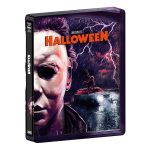
Halloween (1978): Limited Edition Review Halloween 1978 – Oemiu
Halloween (1978): Limited Edition Review
John Carpenter’s *Halloween*, released in 1978, isn’t just a movie; it’s a cultural touchstone. A masterclass in suspense, minimalist filmmaking, and effective storytelling, it practically invented the slasher subgenre as we know it. But its enduring legacy stretches beyond its impact on horror. It’s a testament to the power of atmosphere, a celebration of low-budget ingenuity, and a chilling exploration of primal fears. While countless sequels, remakes, and imitators have followed, none have quite captured the magic and terror of the original. This review delves into the limited-edition versions, examining what makes them special, what they offer fans, and why the original *Halloween* continues to haunt our collective imagination. We’ll be looking at various limited releases, analyzing their bonus features, packaging, and overall value for the discerning collector. Whether you’re a seasoned horror aficionado or a newcomer eager to understand the film’s significance, this in-depth exploration aims to dissect the enduring appeal of *Halloween* and its special editions. The suspense is palpable, the tension is unwavering, and the masked menace of Michael Myers remains an iconic figure in cinematic history. This isn’t just a review; it’s an appreciation of a film that redefined horror. This article will help guide you through some of the different editions of the 1978 Halloween release.
The Haunting Origins: Why *Halloween* Endures
The brilliance of *Halloween* lies not in gratuitous gore, but in its masterful use of suspense. Carpenter understands that what we don’t see is often far more terrifying than what we do. Michael Myers, “The Shape,” is a blank canvas of pure evil, his motives shrouded in mystery, his actions seemingly devoid of reason. This ambiguity amplifies the fear, allowing viewers to project their own anxieties onto the masked figure. The film’s simple plot – a young babysitter stalked by a relentless killer on Halloween night – is elevated by its impeccable execution. Dean Cundey’s cinematography is breathtaking, transforming the seemingly idyllic suburban streets of Haddonfield, Illinois, into a landscape of impending doom. The long, unbroken takes create a sense of unease, while the use of shadow and light heightens the atmosphere of dread. Carpenter’s iconic score, composed and performed by himself, is equally crucial to the film’s success. The simple, repetitive piano melody becomes a harbinger of death, instantly recognizable and utterly chilling. The score isn’t just background music; it’s an integral part of the narrative, amplifying the tension and foreshadowing the horror to come. *Halloween’s* success isn’t solely attributable to its technical prowess. It also taps into deep-seated anxieties about the loss of innocence, the vulnerability of youth, and the lurking darkness that can exist even in the most ordinary of places. Laurie Strode, played with remarkable vulnerability by Jamie Lee Curtis, becomes a symbol of the quintessential “final girl,” a resourceful and resilient survivor who confronts the embodiment of evil. Her struggle resonates with audiences because it feels relatable, grounded in the reality of everyday life. The fact that the story takes place on Halloween adds another layer of symbolic meaning. Halloween, a holiday traditionally associated with costumes, candy, and harmless fun, is transformed into a night of unimaginable terror, a stark reminder that evil can lurk behind any mask. The juxtaposition of the mundane and the macabre is what makes *Halloween* so unsettling and unforgettable. The film is a lean, mean, scare machine, devoid of unnecessary exposition or extraneous subplots. Every scene serves a purpose, building suspense and ratcheting up the tension. This streamlined approach is a key element of its success, allowing the horror to unfold gradually and relentlessly. Many special editions of Halloween 1978 offer behind-the-scenes glimpses into this efficient and inspired filmmaking process.
The Limited Edition Appeal
For dedicated fans, owning a limited edition of *Halloween* isn’t just about possessing a physical copy of the film; it’s about owning a piece of cinematic history. These special editions often include a wealth of bonus features, such as behind-the-scenes documentaries, deleted scenes, audio commentaries, and interviews with the cast and crew. These extras provide valuable insights into the making of the film, revealing the creative process, the challenges faced, and the lasting impact of *Halloween*. Collectors also appreciate the unique packaging and artwork that often accompany limited editions. Steelbooks, for example, are highly sought after for their sleek designs and durable construction. Other editions may include special artwork, posters, lobby cards, and other collectibles that enhance the overall viewing experience. The rarity of these editions also adds to their appeal. Limited print runs mean that once they’re sold out, they become increasingly difficult to find, driving up their value and making them a prized possession for serious collectors. The higher price tag of limited editions is often justified by the quality of the presentation and the abundance of bonus content. For fans who want to immerse themselves fully in the world of *Halloween*, these editions offer a level of detail and insight that isn’t available in standard releases. The different versions of Halloween 1978 often focus on different aspects of the film’s production. Some center on the music, offering isolated score tracks and interviews with John Carpenter about his compositional process. Others focus on the actors, providing in-depth profiles of Jamie Lee Curtis and Donald Pleasence. Still others delve into the technical aspects of the film, exploring Dean Cundey’s innovative cinematography and Tommy Lee Wallace’s effective production design. Ultimately, the appeal of a limited edition of *Halloween* is subjective. It depends on the individual collector’s preferences, budget, and level of fandom. However, for those who are passionate about the film, these editions offer a unique and rewarding way to experience and appreciate a true cinematic masterpiece. Special editions can often revitalize interest in a film, introducing it to new audiences and reminding longtime fans of its enduring power. The collectability factor also plays a significant role, with some limited editions becoming highly sought-after items in the years following their release. The value of these items can increase dramatically, making them a worthwhile investment for some collectors.
Comparing Limited Editions: A Collector’s Guide
Navigating the world of *Halloween* limited editions can be overwhelming. With so many different versions available, it’s important to understand the features and differences between them to make an informed purchase. This section provides a comparative overview of some of the most popular and sought-after limited editions, highlighting their key features, pros, and cons.
| Edition | Features | Pros | Cons | Approximate Price (USD) |
|---|---|---|---|---|
| Scream Factory Limited Edition | 4K UHD, Blu-ray, Bonus features (interviews, documentaries, commentaries), Collectible artwork, Booklet | Extensive bonus content, High-quality transfer, Beautiful packaging | Can be expensive, May be hard to find | $50 – $100 |
| Anchor Bay Limited Edition (2007) | Blu-ray, DVD, Audio Commentary, Documentary | Classic Edition, Good Value | Older transfer, Fewer bonus features | $30 – $60 |
| Second Sight Films Limited Edition (UK) | 4K UHD, Blu-ray, Bonus features, Hardbox packaging, Booklet | Excellent transfer, Comprehensive bonus features, Unique packaging | Region locked (may require a region-free player), Can be expensive to import | $70 – $120 |
The Scream Factory edition is renowned for its comprehensive bonus features, including in-depth interviews with the cast and crew, behind-the-scenes documentaries, and multiple audio commentaries. The 4K UHD transfer provides a stunning visual experience, showcasing Dean Cundey’s cinematography in all its glory. The collectible artwork and booklet add to the overall value of this edition, making it a must-have for serious fans. However, its higher price point may be a barrier for some collectors. The Anchor Bay Limited Edition from 2007 is a more affordable option, offering a solid Blu-ray and DVD presentation of the film, along with some basic bonus features. While the transfer isn’t as impressive as the Scream Factory edition, it’s still a significant upgrade over standard DVD releases. This edition is a good choice for collectors who are on a budget but still want to own a physical copy of *Halloween*. The Second Sight Films Limited Edition, released in the UK, is another top-tier option, boasting a 4K UHD transfer, extensive bonus features, and unique hardbox packaging. The transfer is widely regarded as one of the best available, showcasing the film’s visual details with remarkable clarity. However, this edition is region locked, meaning it may require a region-free Blu-ray player to watch in certain countries. The import costs can also add to the overall expense. When choosing a limited edition, consider your budget, your viewing preferences, and your desire for bonus content and collectibles. If you’re primarily concerned with picture quality, the Scream Factory or Second Sight editions are excellent choices. If you’re looking for a more affordable option, the Anchor Bay edition is a solid alternative. And if you’re a die-hard collector who wants the most comprehensive and visually stunning edition possible, the Second Sight version is worth the investment, provided you have the means to play it. Remember that prices can vary depending on availability and demand, so it’s always a good idea to shop around and compare prices before making a purchase. Consider which Halloween 1978 special edition aligns best with your viewing habits. If you only watch movies occasionally, a standard Blu-Ray may suffice. However, if you are a cinephile who appreciates the nuances of film preservation, then the 4k editions offer a noticeable upgrade.
Beyond the Screen: *Halloween’s* Cultural Impact
*Halloween’s* influence extends far beyond the confines of the horror genre. It revolutionized independent filmmaking, proving that a low-budget movie could achieve massive success and critical acclaim. The film’s minimalist approach to storytelling, its focus on atmosphere and suspense, and its effective use of practical effects inspired a generation of filmmakers. Countless slasher films followed in *Halloween’s* wake, borrowing its tropes and techniques. However, few have managed to replicate the original’s magic. The film’s success also helped launch the careers of John Carpenter and Jamie Lee Curtis, both of whom went on to become major figures in Hollywood. Carpenter’s distinctive directorial style and Curtis’s compelling performance as Laurie Strode cemented their places in cinematic history. *Halloween’s* impact on popular culture is undeniable. Michael Myers has become a ubiquitous symbol of horror, his iconic mask instantly recognizable around the world. The film’s score is equally iconic, its simple melody forever associated with fear and suspense. The film has been referenced, parodied, and homaged in countless movies, television shows, and video games. The themes explored in *Halloween* – the vulnerability of youth, the pervasiveness of evil, the importance of community – continue to resonate with audiences today. The film serves as a cautionary tale, reminding us that even in the most idyllic of settings, darkness can lurk just beneath the surface. The film’s enduring appeal lies in its ability to tap into our primal fears and anxieties. It’s a reminder that the monsters we fear most are often the ones that we create ourselves. The movie also inspired a wave of “final girl” characters in horror films, who demonstrate resilience and resourcefulness in the face of danger. This has had a lasting effect on the portrayal of women in the genre. *Halloween’s* impact on the slasher genre is undeniable, setting the standard for many films that followed. The masked killer, the stalking perspective, and the focus on unsuspecting victims became staples of the subgenre. The concept of “Halloween night” itself has become synonymous with fear and danger in popular culture, forever altering the way we perceive this holiday. The film’s influence can even be seen in modern horror films, which often pay homage to *Halloween* through subtle references and stylistic choices. The themes of trauma and its effects are also relevant and continue to be explored in many contemporary horror movies. Fans often seek out early viewings of Halloween 1978.
Collecting *Halloween* Memorabilia: A Passionate Pursuit
Beyond the limited-edition releases, *Halloween* has spawned a vast array of memorabilia, ranging from action figures and masks to posters and soundtracks. Collecting these items is a passionate pursuit for many fans, allowing them to connect with the film on a deeper level and express their love for the franchise. Action figures of Michael Myers and Laurie Strode are particularly popular, often featuring highly detailed sculpts and accurate representations of the characters. Masks, both officially licensed and fan-made, are another highly sought-after item, allowing collectors to embody the iconic villain. Posters, both original theatrical releases and limited-edition prints, are a visually stunning way to celebrate the film’s artistry. Soundtracks, both vinyl and CD, are a must-have for fans of John Carpenter’s iconic score. Collecting *Halloween* memorabilia can be a rewarding but also challenging endeavor. The value of these items can vary greatly depending on their rarity, condition, and demand. Some items, such as original theatrical posters, can fetch hundreds or even thousands of dollars at auction. It’s important to do your research before making a purchase, to ensure that you’re getting a fair price and that the item is authentic. There are many online communities and forums dedicated to *Halloween* memorabilia, where collectors can share information, trade items, and connect with other fans. These communities can be a valuable resource for learning about the history of the franchise and identifying rare and valuable items. Collecting *Halloween* memorabilia is more than just a hobby; it’s a way to preserve the legacy of a cinematic masterpiece. These items serve as a tangible reminder of the film’s enduring power and its impact on popular culture. Whether you’re a casual fan or a die-hard collector, there’s something for everyone to appreciate in the world of *Halloween* memorabilia. This includes everything from replica weapons (safely designed, of course) to signed photographs from the cast. The dedication of some *Halloween* fans extends to creating incredibly detailed costumes and attending conventions, further demonstrating the film’s lasting impact. Some collectors even focus on specific aspects of the film, such as the Myers House, recreating miniature versions or collecting artwork depicting the iconic location. For true enthusiasts, owning *Halloween* memorabilia is a way to keep the spirit of the film alive long after the credits have rolled. This fascination underscores how deeply the film has permeated popular culture.
FAQ
What makes the original *Halloween* movie so special?
*Halloween* (1978) is special for several reasons. First, its innovative approach to horror filmmaking, focusing on suspense and atmosphere rather than explicit gore, set a new standard for the slasher genre. John Carpenter’s minimalist direction, combined with Dean Cundey’s masterful cinematography and Carpenter’s own iconic score, created a palpable sense of dread and unease. Secondly, the film’s simple yet effective plot, centered around a relentless killer stalking a babysitter on Halloween night, tapped into universal fears about vulnerability and the unknown. The film is a reminder that danger can lurk anywhere, even in the most ordinary of suburban settings. Moreover, *Halloween* launched the careers of John Carpenter and Jamie Lee Curtis, both of whom became major figures in Hollywood. It’s a film that continues to be watched yearly by millions. The film has been copied so often yet has rarely been equaled.
What are the key differences between the various limited editions of *Halloween*?
The key differences between limited editions of *Halloween* typically revolve around the quality of the video and audio transfer, the amount and type of bonus content included, and the packaging and collectible items that come with the edition. Some editions, like the Scream Factory release, boast a 4K UHD transfer for superior visual clarity, while others may only offer a standard Blu-ray or DVD presentation. Bonus content can range from behind-the-scenes documentaries and interviews to deleted scenes and audio commentaries. Packaging can vary from standard Blu-ray cases to steelbooks with unique artwork or hardbox sets with collectible booklets and posters. The price of each edition usually reflects these differences, with more comprehensive and visually impressive editions commanding a higher premium. Collectors should also consider the region coding of certain releases and whether their equipment is compatible.
Which limited edition of *Halloween* offers the best value for money?
The best value for money often depends on individual preferences and priorities. If picture quality is paramount, a 4K UHD edition like the Scream Factory or Second Sight release would be the best choice, despite the higher price tag. However, if budget is a major concern, the Anchor Bay Limited Edition from 2007 offers a solid Blu-ray presentation of the film along with some basic bonus features at a more affordable price. Collectors should weigh the cost against the features and content offered to determine which edition best suits their needs and budget. Reading reviews and comparing specifications can also help in making an informed decision. Ultimately, the “best” value is subjective and depends on what the individual collector values most.
What kind of bonus features can I expect to find in *Halloween* limited editions?
Limited editions of *Halloween* often include a wide range of bonus features designed to enhance the viewing experience and provide deeper insights into the making of the film. These features can include:
* Behind-the-scenes documentaries and featurettes
* Interviews with the cast and crew
* Audio commentaries from John Carpenter, Jamie Lee Curtis, and other key figures
* Deleted scenes and alternate takes
* Trailers, TV spots, and radio ads
* Still galleries and production photos
* Booklets with essays and archival materials
* Collectible posters, lobby cards, and artwork
The specific bonus features included will vary depending on the edition, so it’s important to check the specifications before making a purchase. These extras often offer a deeper understanding of the film’s production, creative process, and cultural impact, making them a valuable addition for serious fans.
Are the region-locked limited editions of *Halloween* worth importing?
Whether region-locked limited editions of *Halloween* are worth importing depends on several factors. Firstly, you need to have a region-free Blu-ray player or a way to bypass the region coding to be able to watch the disc. Secondly, you need to consider the cost of importing the edition, which can include shipping fees, customs duties, and currency exchange rates. Finally, you need to weigh the benefits of owning that particular edition against the cost and effort involved. If the edition offers unique features or bonus content that are not available elsewhere, and you are a die-hard fan of *Halloween*, then importing may be worth it. However, if you are on a budget or simply looking for a standard viewing experience, a domestically available edition may be a more practical choice. Researching reviews and comparing features can help you make an informed decision.
How has *Halloween* influenced the horror genre?
*Halloween* has profoundly influenced the horror genre by popularizing and refining the slasher subgenre. It established many of the tropes that would become staples of slasher films, including:
* The masked killer
* The stalking perspective
* The focus on unsuspecting teenage victims
* The use of suspense and atmosphere over explicit gore
* The “final girl” archetype
* The Halloween setting
The film’s success paved the way for countless imitators and sequels, cementing its place as a landmark achievement in horror cinema. Its influence can be seen in everything from *Friday the 13th* to *Scream*, and its themes and techniques continue to be explored and reinterpreted in modern horror films. The movie also set a new standard for low-budget independent filmmaking, proving that a well-crafted horror film could achieve massive success and critical acclaim.
What is the significance of the Michael Myers mask?
The Michael Myers mask is one of the most iconic and recognizable symbols in horror cinema. Its blank, expressionless face is a key element of the character’s mystique and terror. The mask’s lack of emotion makes Michael Myers seem inhuman and unstoppable, amplifying the fear he inspires. The mask was originally a modified William Shatner mask, painted white to create a blank canvas. This simple but effective design choice contributed to the film’s low-budget aesthetic and added to the character’s unsettling presence. The mask has become synonymous with the *Halloween* franchise and has been replicated and imitated countless times in other horror films and media. Its enduring appeal lies in its simplicity and its ability to evoke a sense of primal fear and dread. The mask isn’t just a prop; it’s a representation of pure, unadulterated evil.
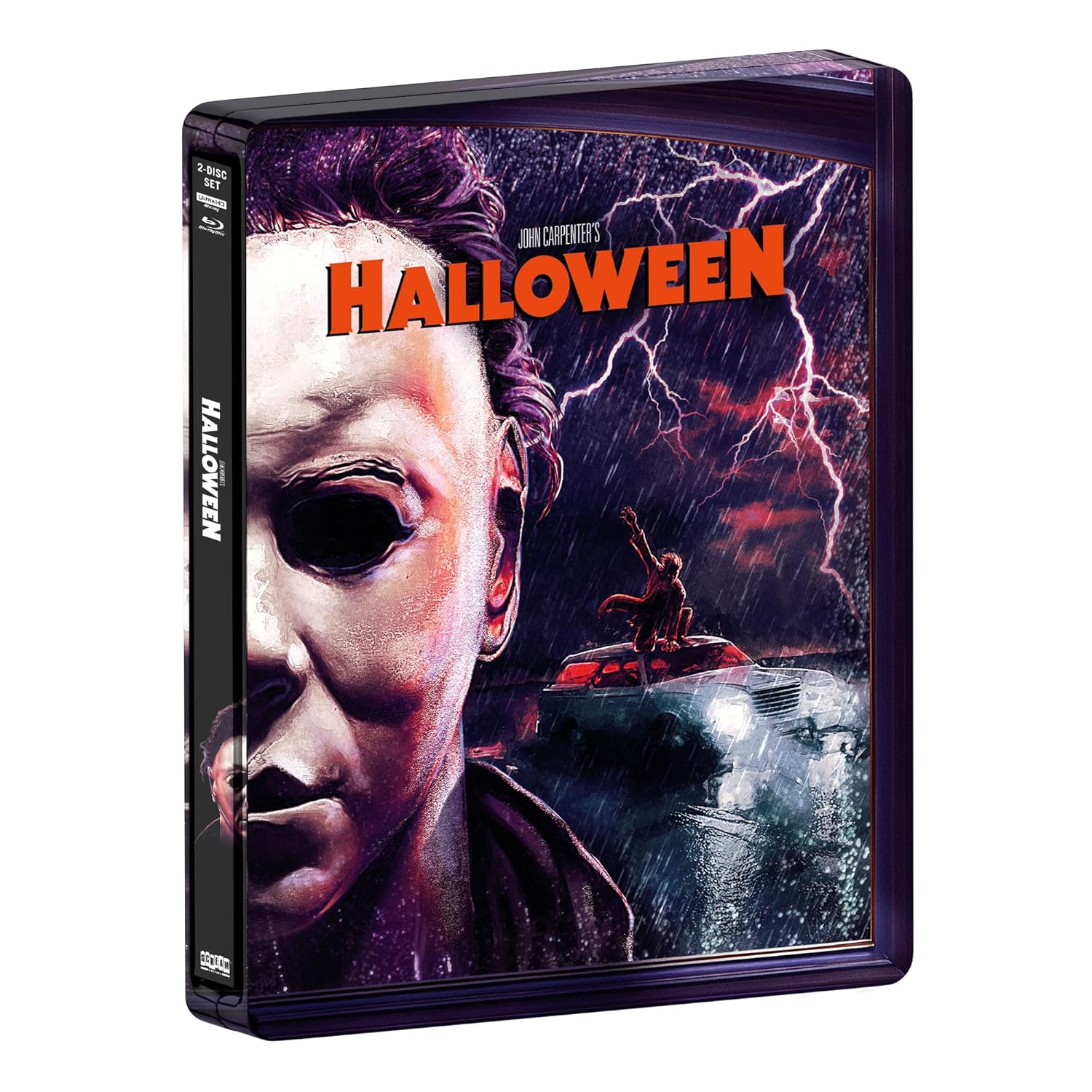
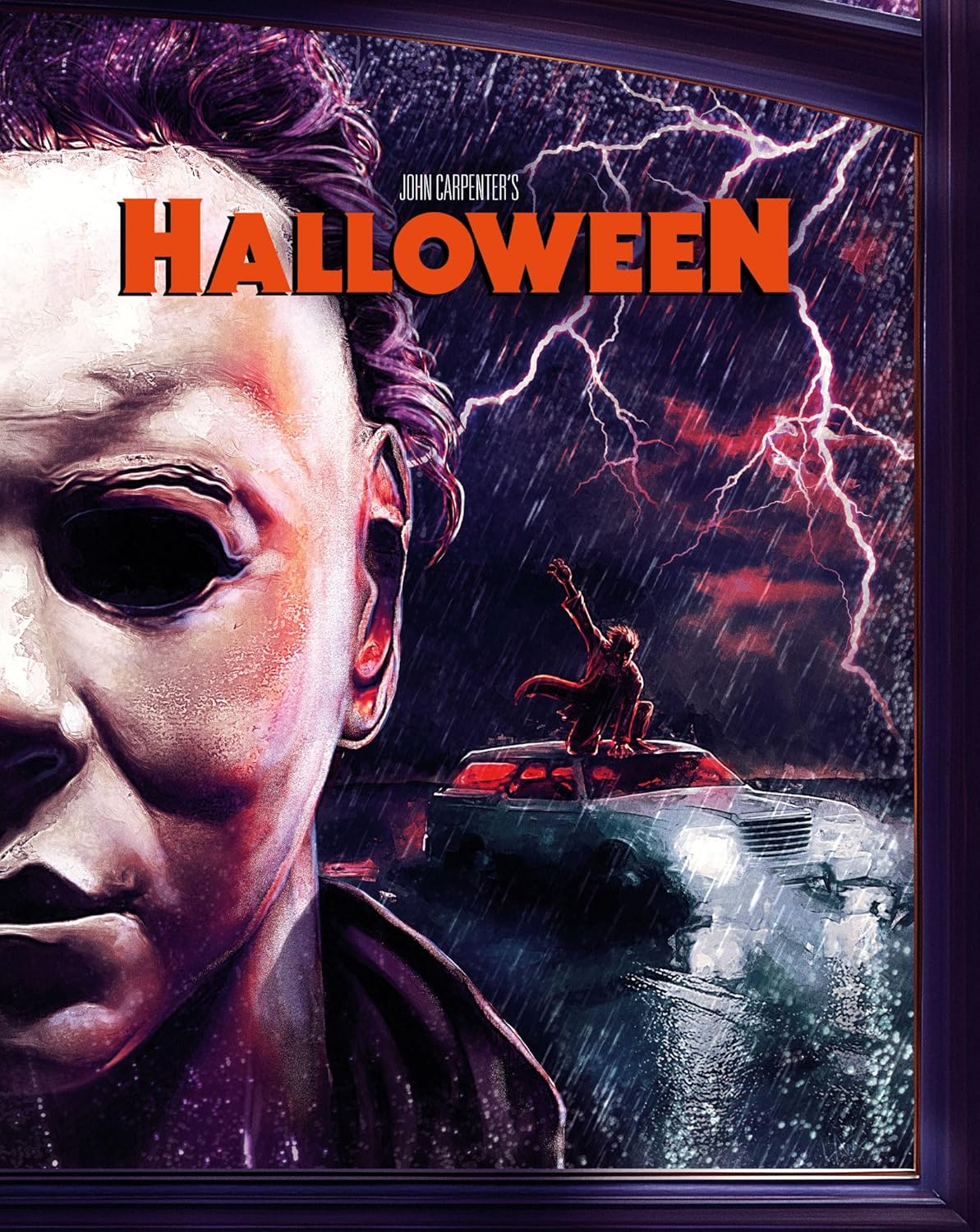
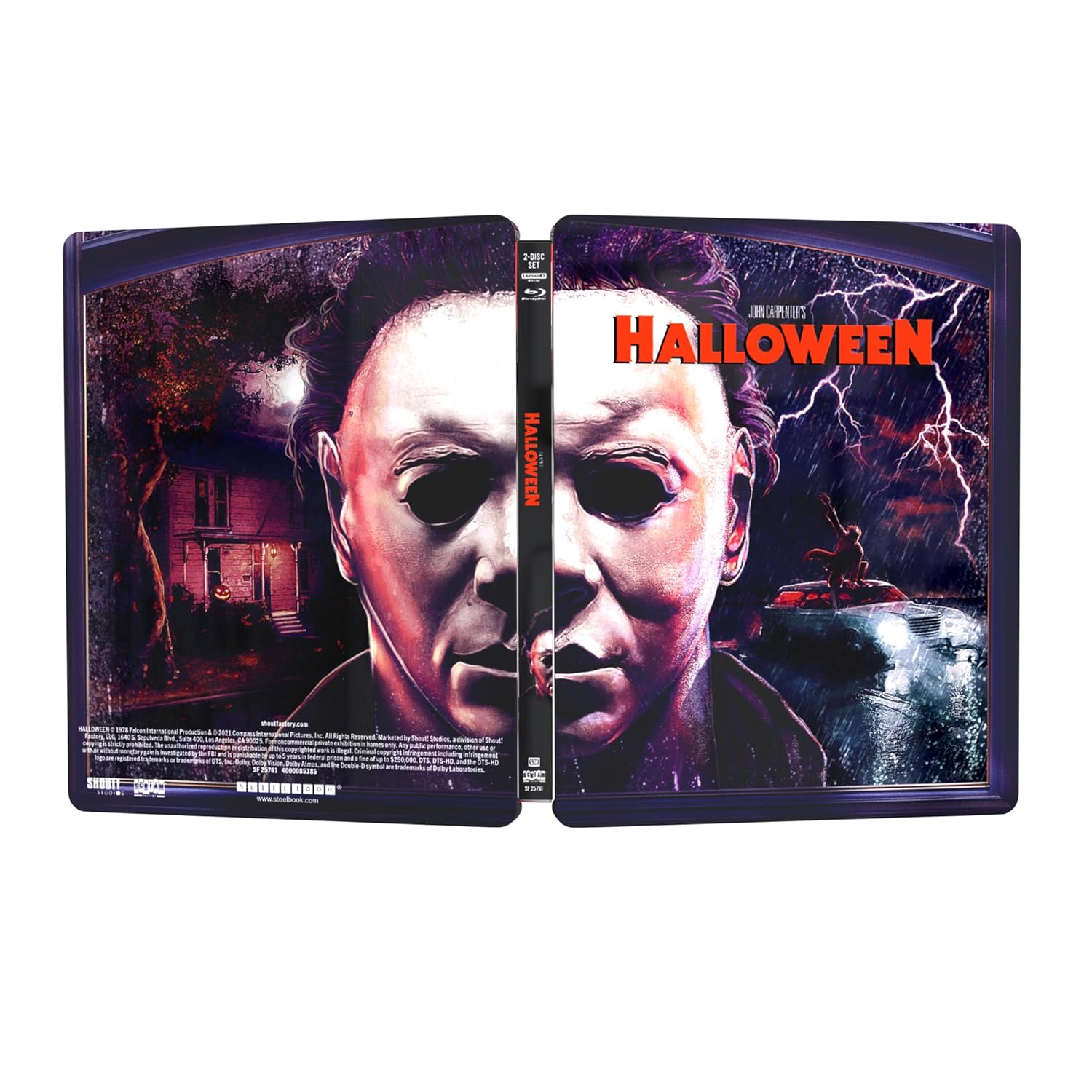
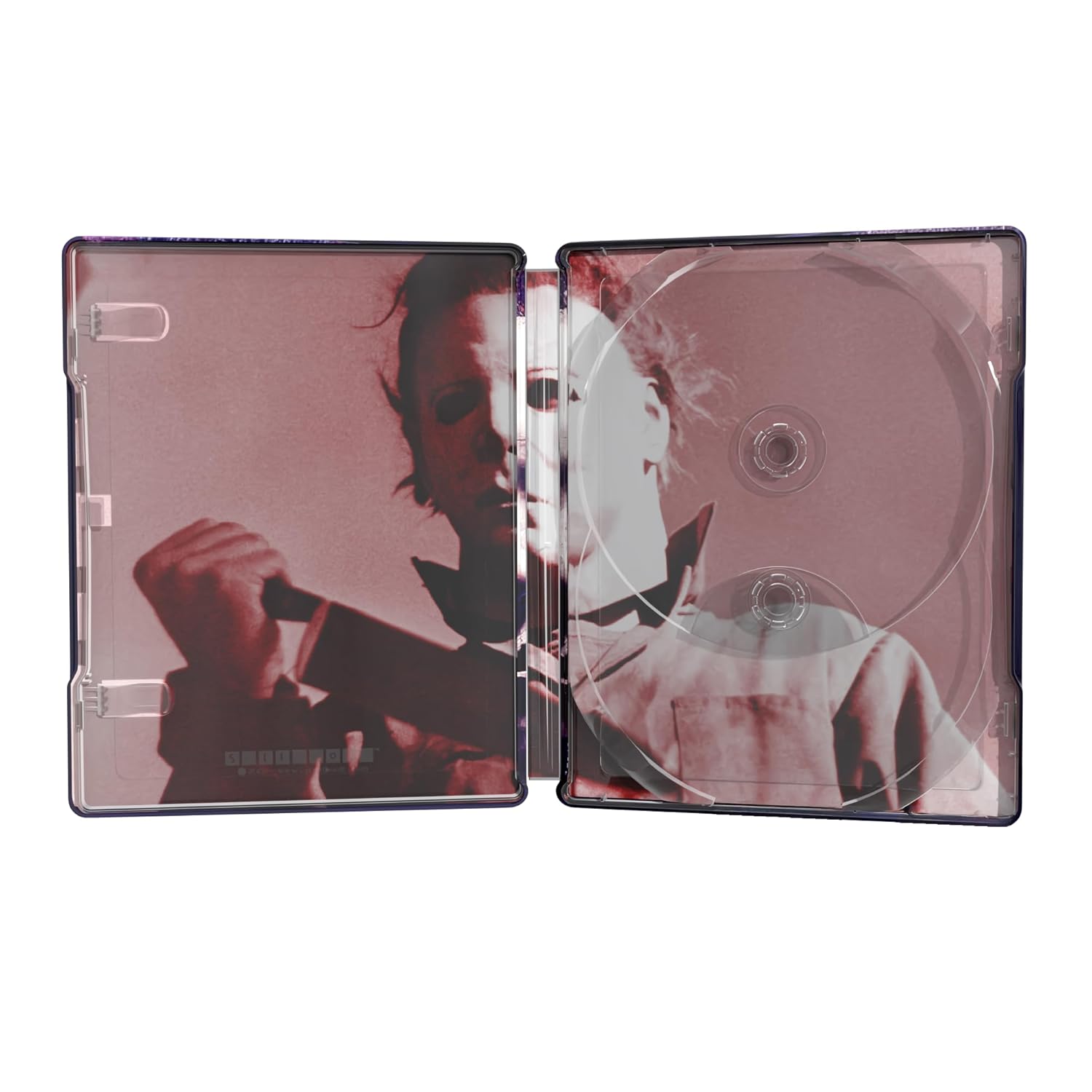




![Scary Stories To Tell In The Dark [DVD]](https://oemiu.com/wp-content/uploads/2025/09/1757427628_Scary-Stories-To-Tell-In-The-Dark-DVD-Review-Best-336x220.jpg)
